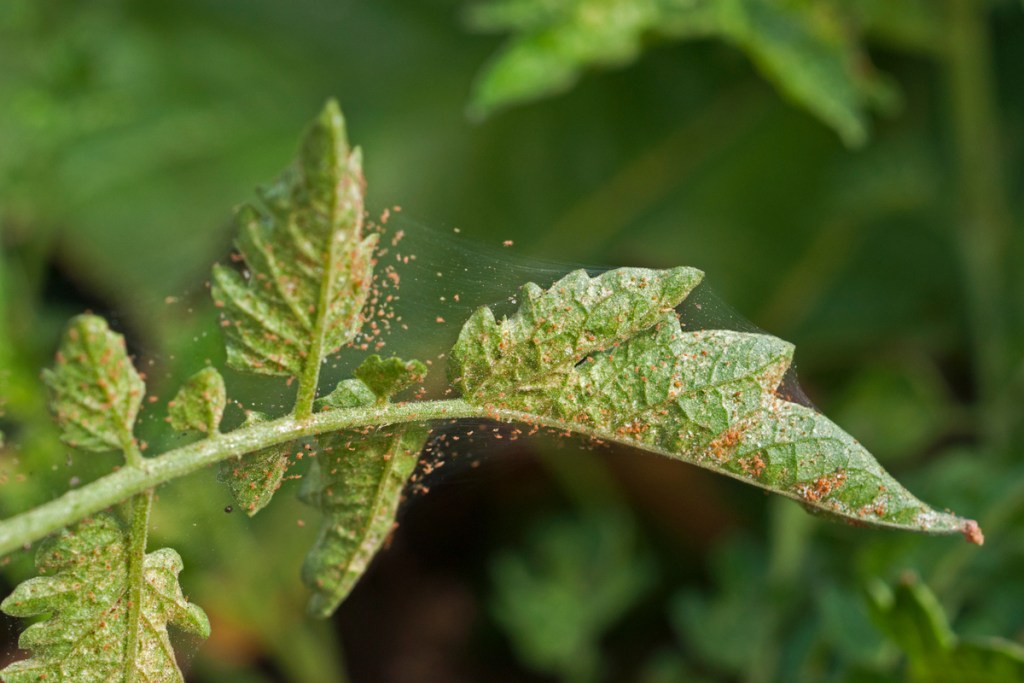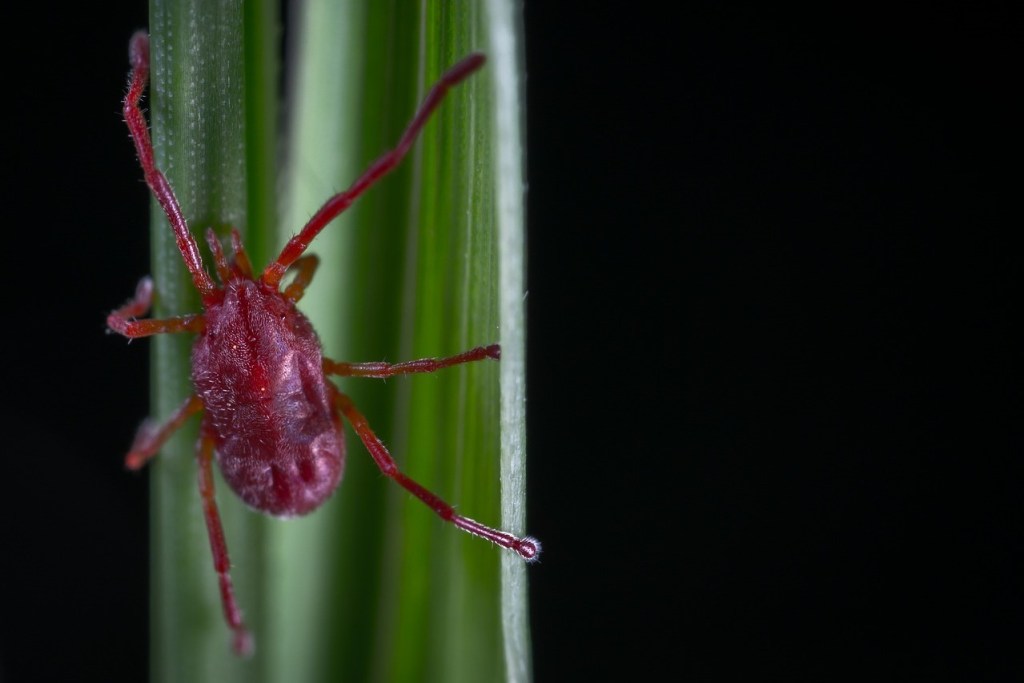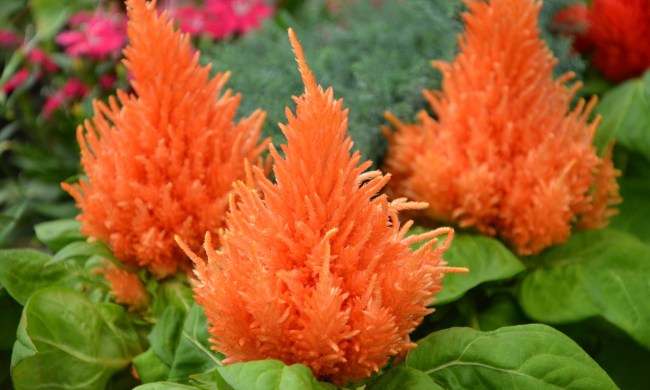It doesn’t matter if you’re a novice or a professional gardener — some garden pests bring all levels of gardeners together because they cause damage in diverse growing environments. Red spider mites are one such pest, as they can be found in most gardens. If these little pests have invaded your garden, then you might be wondering what risks red spider mites pose and how you can get rid of them. This handy guide will answer all your questions so you can keep your garden safe and healthy.

What are red spider mites?
“Red spider mite,” or simply “spider mite,” is a common name given to the Tetranychidae family of arachnids. This family includes about 1,200 different species of tiny sap suckers. They are related to, but separate from, spiders, ticks, and scorpions. They have eight legs, an oval body, and the ability to make silk webbing. They vary in color and may be green, yellow, red, reddish-brown, or nearly black. They may also feature spots or other markings. They do not have wings or antennae. Adults are only about the size of the period at the end of this sentence.
Each spider mite species feeds on different host plants and is active in its preferred climate conditions. Two of the most common species, both with broad appetites, are the Two-Spotted Spider Mite and the Red Southern Mite. The Two-Spotted is found on a wide range of deciduous ornamental trees, shrubs, flowers, fruits, and other crops during hot summer weather. The Red Southern Mite attacks broadleaf evergreens like hollies, azaleas, viburnum, and rhododendron, along with roses and some other deciduous shrubs in cool spring and fall temperatures.
These arachnids have a five-stage life cycle that includes an egg stage, larval stage, two nymphal stages, and the adult stage. Immature mites resemble adults, but smaller. In ideal conditions, the transformation from egg to adult takes about a week. Adult females may live for several weeks and lay dozens of eggs during their lifespan. Overlapping generations of reproducing adults can cause a population explosion and serious plant damage.

How to spot damage from red spider mites
There are several tell-tale signs to look for when you suspect you might have a red spider mite problem.
Step 1: Look for damaged leaves.
Spiders mites' piercing mouthparts are made to puncture the leaf surface from below and allow the pest to extract fluid from individual plant cells. This causes the leaf to exhibit a stippled appearance, as if it has been dusted or sprayed with pale paint droplets where the contents were removed.
Heavy infestations cause yellowing or bronzing of the leaves, along with early leaf drop resembling drought stress. Damage is most evident on the upper leaf surface. Affected plants may be stunted or even killed.
Step 2: Look for webbing.
Most spider mites cover leaves, stems, and flowers with very fine silk. The mites use the silk strands to move from leaf to leaf, and from plant to plant, with help from the wind.
As an added bonus, abundant silk webbing shields them from predators and pesticides. Early in an infestation, the webbing may be found only on lower leaf surfaces and may be difficult to see. Spray a fine mist of water on suspect leaves to make webbing more easily visible.

Know the causes of infestations
When environmental conditions are right, spider mites actively seek new feeding locations. On dry, breezy days, they can spin long strands of silk and move from leaf to leaf or plant to plant. They can also hitch a ride on birds and other animals, and even on gardeners and their tools. Sometimes they come into the garden on newly acquired plants, so it’s a good idea to quarantine, observe, and — if needed — treat every plant before exposing it to the rest of your garden.
Spider mites spread readily in arid, even dusty conditions, infesting plants that suffer from drought stress. They also find a welcome environment in landscape beds with drip irrigation or hydroponic garden setups where plants remain succulent and foliage is rarely wet.

How to get rid of red spider mites
Before treating for an infestation, first confirm that the problem is spider mites. Tap an affected leaf or branch on a sheet of white paper. Any mites that drop will be visible in greater detail with the help of a magnifying glass. If you’re sure you have a mite problem, then it’s time to consider your options.
Step 1: Spray the plant with water to dislodge webbing and adult mites.
You can use either a garden hose or a spray bottle, depending on how many plants you need to treat.
Step 2: Wipe down the affected plant(s) with rubbing alcohol.
If you are only treating one plant or a few, use a cotton ball to wipe down the affected plant(s), being sure to clean the upper and lower surfaces of each leaf and along the stems.
Wait a few hours and hose down the plant. Monitor and repeat the process in a week or two if the problem persists and again as needed until the mites stop coming back.
Step 3: Avoid excessive use of broad-spectrum insecticides.
These chemicals can harm the beneficial insects (ladybugs, lacewings, and predatory mites) that prey on red spider mites and other pests. Instead, use popular low-toxicity miticides to kill spider mites through physical rather than chemical action.
Although they do not kill as quickly as chemical miticides, they are equally as effective when used as directed. Plus, unlike with chemicals, mites do not develop resistance to these products.
Step 4: Use physical and non-chemical alternatives to insecticides.
Oil-based miticides, such as Natria neem oil smother eggs and disrupt the breathing of adults. Garden Safe Insecticidal Soap degrades the soft-bodied mite’s protective outer layer and dries it out. Harris Diatomaceous Earth powder particles cause the soft-bodied mites to dehydrate. This package includes a duster that directs the application where you need it.
Step 5: Follow up with a second treatment a week later.
Monitor the infestation weekly and treat again as needed.

Can red spider mites harm humans?
Whenever you're dealing with pests, it's important to be aware of any personal risks so you can take the proper precautions. Luckily, red spider mites pose little to no risk to humans. While they can bite people, red spider mites are so small that the bites are typically unnoticeable. However, the bites can cause a mild rash or itching in people who are sensitive to red spider mites.
Wearing gloves and generally covering your skin when working in the garden can help reduce the risk of coming into contact with red spider mites. Keeping allergy medications or topical creams on hand is a good idea as well, since they can relieve the symptoms of red spider mite bites if you are sensitive to them.
When the weather turns dry, occasional spider mite outbreaks are to be expected. Strong, healthy plants are able to resist them, especially when they are supported by a host of natural predators. By maintaining a robust garden ecosystem, you can avoid major problems. But when the occasional big infestation does happen, know that there are effective treatments that will help you save your plants without polluting the environment.




